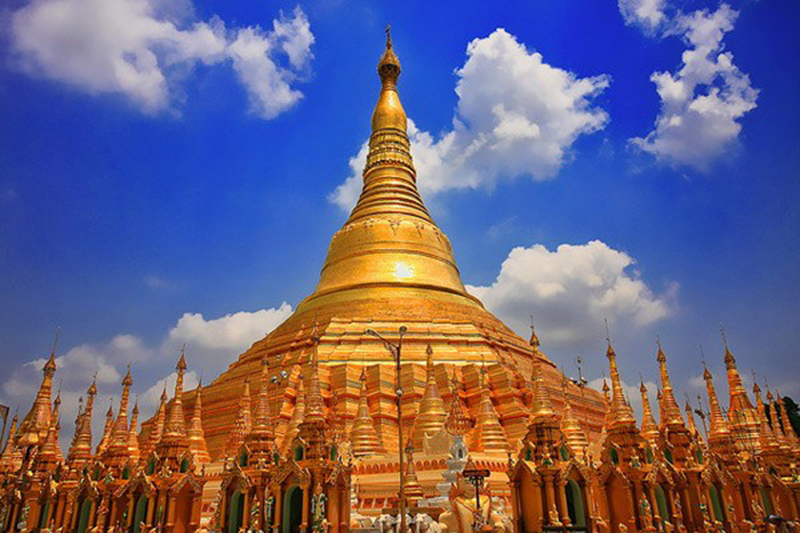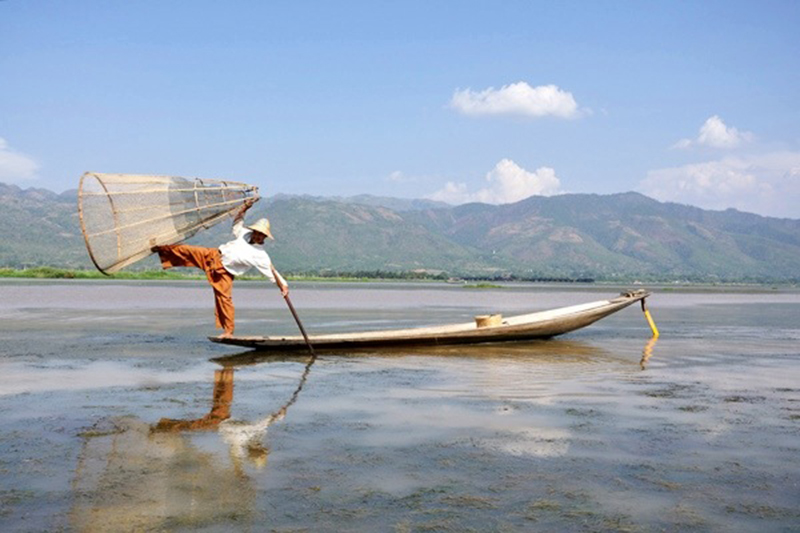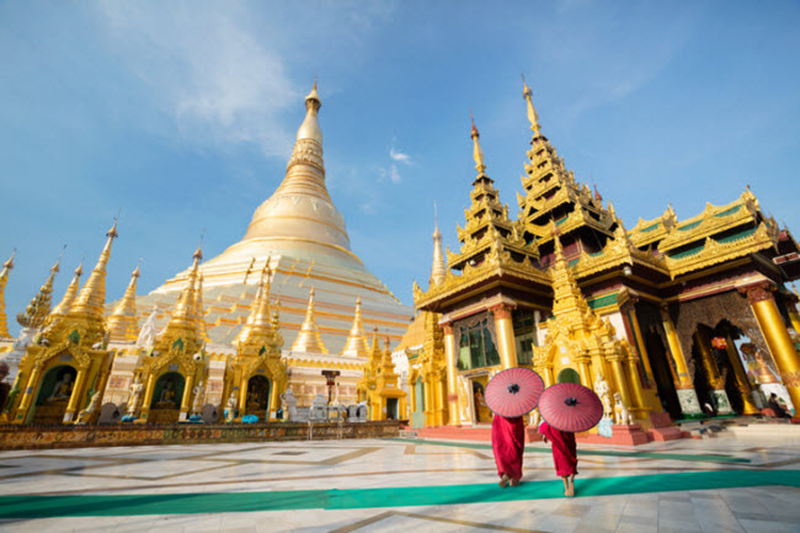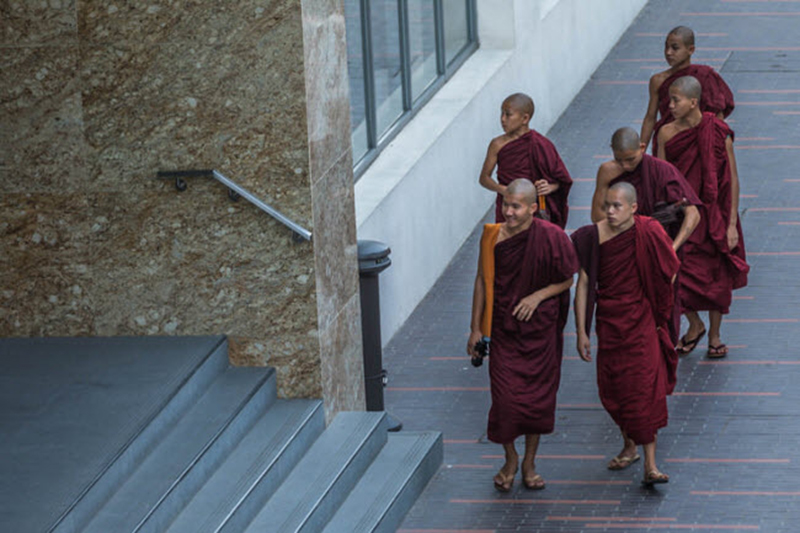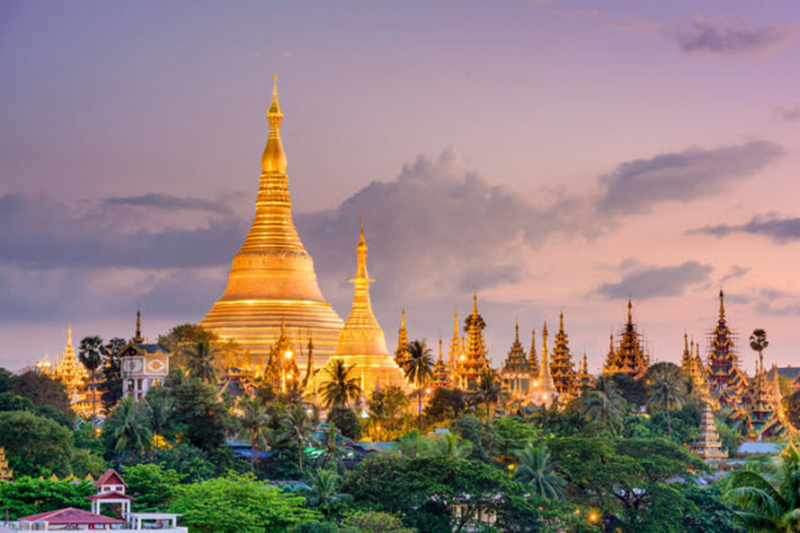HOME/MYANMAR
Myanmar (or Burma)
Geography
Myanmar (or Burma) is the only country in South Asia that can boast of having a great diversity of landscapes, with its mountains and glaciers in the north, its semi-desert region in the center and its dense and tropical forests. which descend until reaching the white sand of the beaches bordering the Andaman Sea.
Myanmar has an area of 677,000 km2 and is larger than France. Myanmar is bordered by Bangladesh and India to the northwest and by China to the northeast. Laos and Thailand are located to the southeast and the Bay of Bengal to the south and west.
The country is irrigated by Ayeyarwaddy, the main and longest river which originates in the Himalayan range and flows into the Andaman Sea. It crosses the country from north to south and divides into 8 arms before reaching the sea, forming a fertile delta. Burma is divided into four natural geographical regions.
- the mountainous region
- the two coastal strips (the Arakan strip to the west and Tenasserim to the south)
- Ayeyarwaddy Valley
- The Ayeyarwaddy Delta
Jet lag
- with Europe +4h30 in summer and +5h30 in winter.
How to arrive
There is no direct flight between Europe and Yangoon. You have to make at least one stopover. The airlines below regularly serve Myanmar
Thai / www.thaiairways.com
– Bangkok Airways / www.bangkokair.com
– Air Asia / www.airasia.com
– Silk Air / www.silkair.com
– Air China / www.airchina.com
– Malaysia Airlines / www.malaysiaairlines.com
Climate
Most of Burma is in a tropical zone. It has three seasons:
The monsoon which begins in mid-May and ends at the end of October. Rainfall is very abundant on the Arakan and Taninnthayi coasts and in the northern mountains. But there is very little rain in the center of the country such as Bagan and Mandalay.
The cold season which begins at the beginning of November until the end of February is the most pleasant season to visit the country. The temperature is very pleasant with bright, sunny days and cooler nights. In the mountains it can get very cold after sunset.
The dry season is present from March to mid-May. During this season, the temperature rises day after day before the rain arrives. It can reach up to 43 degrees in the driest areas such as Bagan and Mandalay.
Flora and fauna
The country has a large number of forests rich in various tree species and many tropical fruits, such as mangoes, jackfruits, mangosteens, bananas, papayas and tangerines which are found in abundance. The famous teak is cultivated and is also found wild in monsoon forests. In the forests of Burma, elephants, tigers, rhinos, monkeys, hares, wild cats, wild pigs and snakes are found. There are also no less than 150 species of birds there.
Population and Ethnicities
Burma is made up of 135 minority ethnic groups, the main ones being the Kachin, Kayar, Kayin, Chin, Mon, Arakan and Shan. There are around 60 million inhabitants and 70% of them are Burmese. The inhabitants of Burma belong to the Mongoloid group and come from three main branches: the Tibeto-Burmese, the Mon-Khmers and the Thai-Chinese.
Language and writing
The national language is Burmese. It is a language close to Tibetan which sounds very monotonous. The Burmese alphabet is derived from the Hindu alphabet which has existed since the 6th century BC. In the Burmese alphabet, there are 33 consonants and 12 vowels. Vowels surround consonants to become words.
Cash
The local currency is called “KYAT”: there are only notes, the coins having disappeared about twenty years ago. The largest note is worth 5000 kyats, followed by notes of 1000, 500, 200,100 and 50.
The dollars you take must be new. The Burmese are very sensitive to dollars and even slightly damaged notes, such as a small line of creases, a dot of ink, etc. will not be accepted, which quite often poses a problem.
Economy
The country’s natural riches are very impressive. Tropical woods (such as teak and ironwood), precious stones (ruby, sapphire, jade, spinel, topaz), gold, silver, ores (coal, lead, tungsten, copper and uranium) are abundant . Burma is also the eighth largest gas producer in the world. Burma is essentially an agricultural country, 64% of the population cultivates the land. The main income of the state comes from agriculture, fishing, gas, oil and minerals. Individual income is very low. The majority of the population, such as small sellers or cycle rickshaw drivers, barely earn US$5 to US$10 per day. The middle class earns 10 to 20 US$ per day. Intellectuals and traders earn a much better living.
Capital city
The administrative capital has been Nay Pyi Daw since 2006. The largest economic city is Yangoon where approximately 6.7 million inhabitants currently live. Mandalay is the second largest city in the country with around 1.5 million inhabitants. It is also the commercial center of the northern part of the country.
Electricity
The current is 220 volts but it is not stable and power cuts are very frequent. In some villages in the countryside, there is no electricity. They are lit with batteries, oil lamps or even candles. In general, hotels are equipped with generators.
Food
People normally eat three meals a day but the Burmese love to snack. This is why you will find them eating in small bistros and tea houses all day long. Burmese people drink tea with condensed milk. Fish soup with pasta (Mohingha) and coconut milk soup with noodles are the typical dishes served for breakfast. The staple food is rice and it is eaten with meat curry and various vegetables. The curry is made from onion, garlic and tomatoes. The most consumed meats are chicken and pork, fish and shrimp complete this diet. Palm sugar balls and tea salad with peanuts and sesame are eaten as dessert. In the markets, we find a quantity of varied fruits and vegetables.
Telephone and Internet
Your cell phone does not work in Burma. Calls to Europe from your hotel will be very expensive, around US$7 or US$8 per minute and may be interrupted frequently.
Internet works in almost all hotels. Some hotels offer this service for free and others charge around US$3 per hour. You can also find internet cafes easily in big cities. The connection works better in Internet cafes than in hotels and in principle costs less. It is possible to call Europe via an Internet connection but it is common for the communication to be interrupted.
